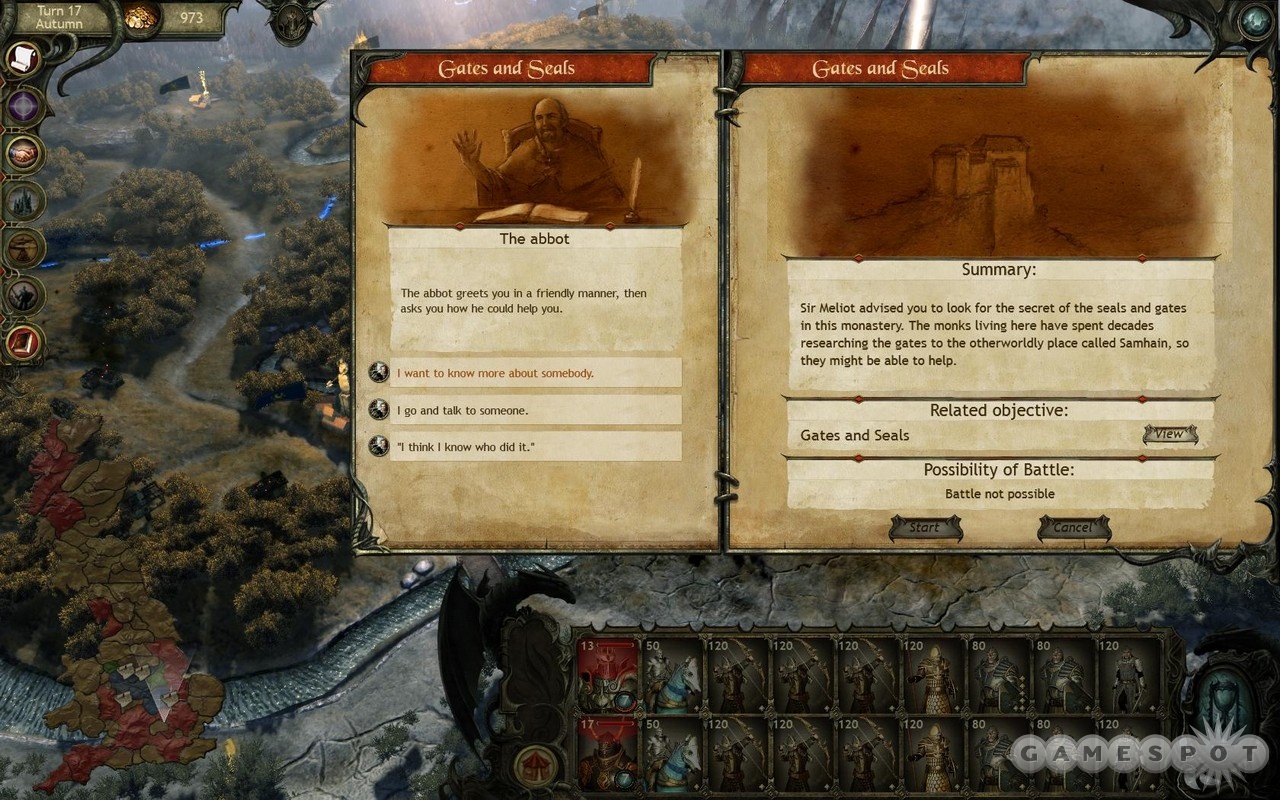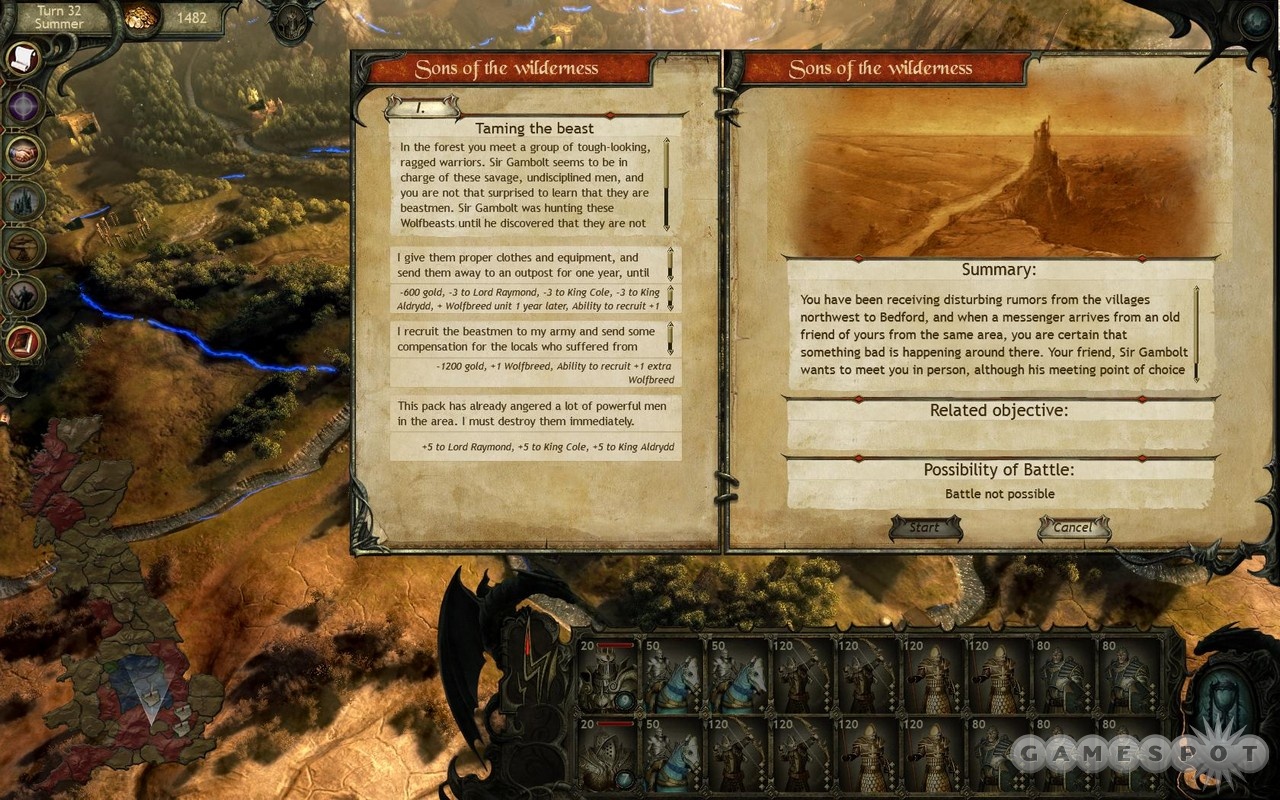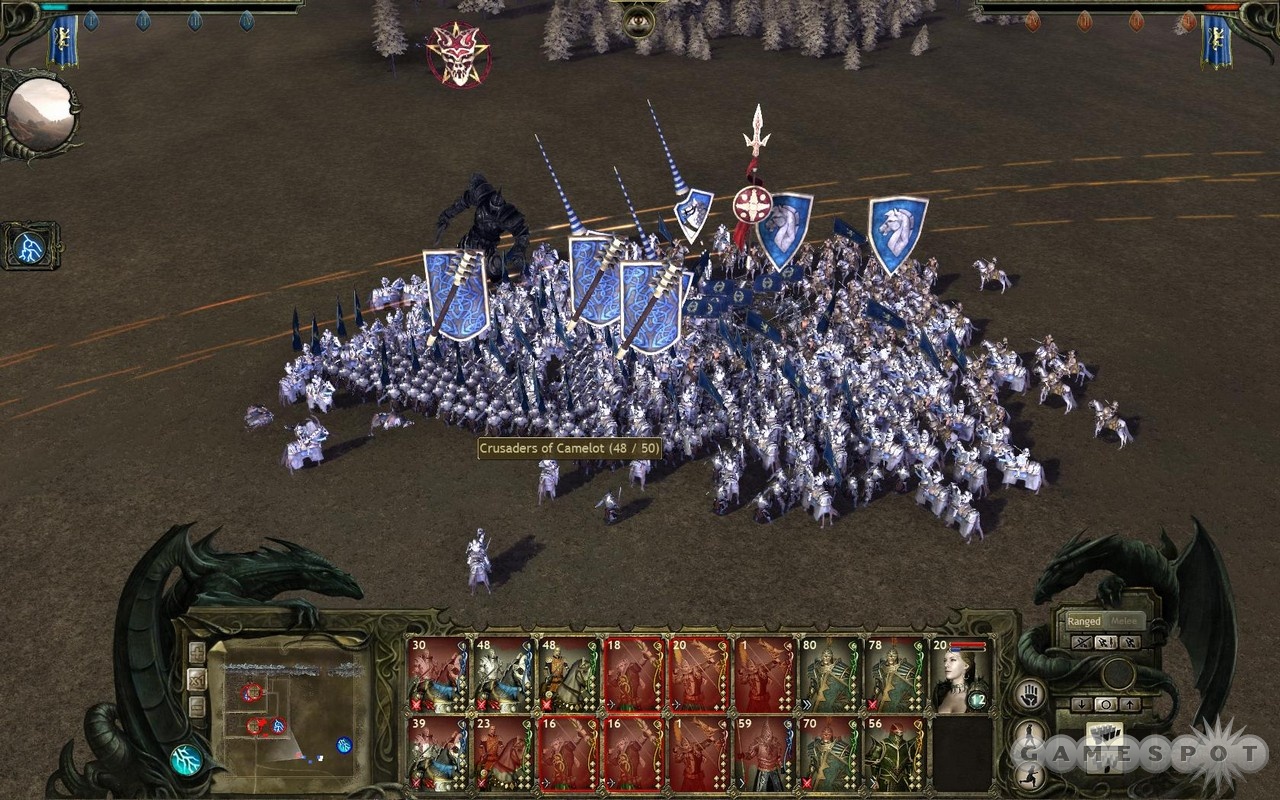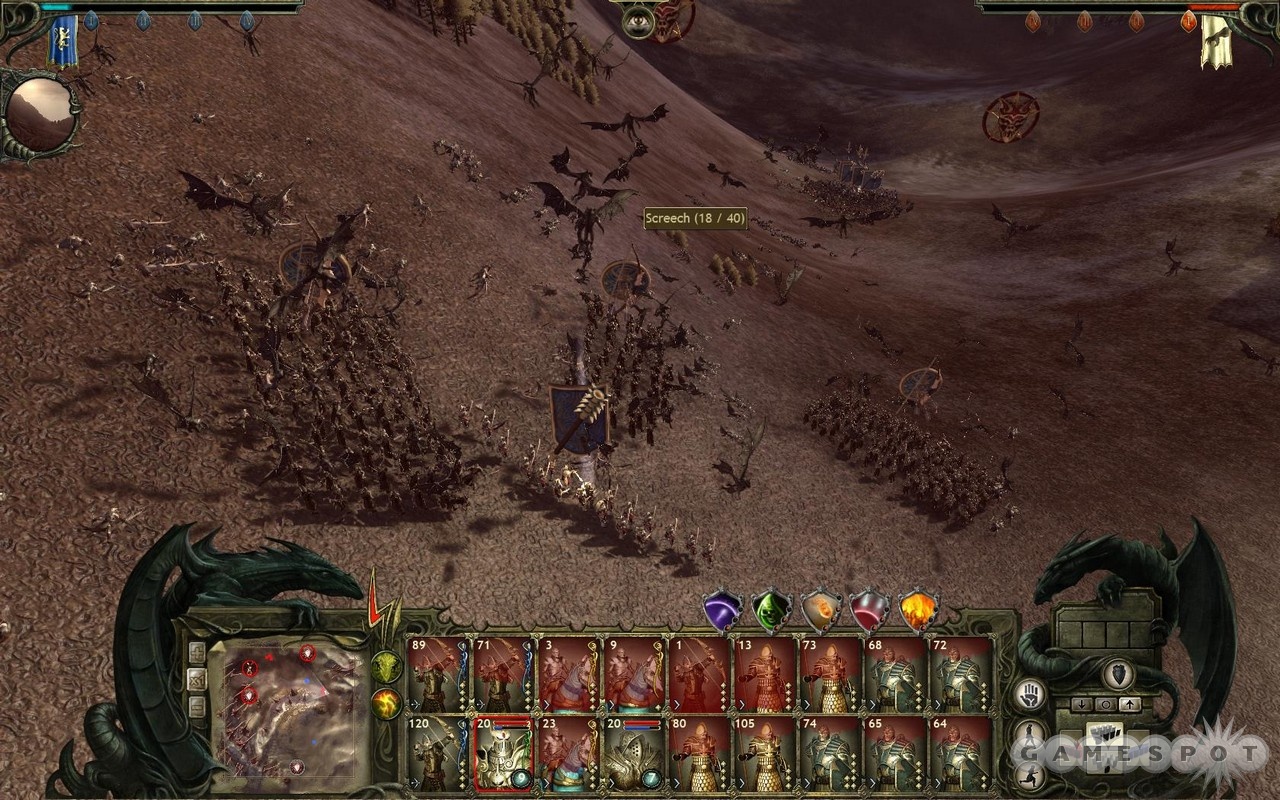What happens when half of your game is flawed, but the other half is so good that you can sometimes overlook those flaws? That's the predicament in which King Arthur II: The Role-Playing Wargame finds itself. The role-playing aspect shines, presenting players with a good story and interesting decisions, but the wargame stumbles, suffering from technical issues and an AI with a poor grasp of tactics.

King Arthur II nails story and setting. Britannia faces many threats: a stricken King Arthur lies at death's door; the Round Table is scattered; the evil Fomorians, the demonlike beings of Celtic legend, are wreaking havoc; and the Holy Grail is in shatters. As Arthur's son, it's your job to put Britannia to rights. You make allies (or enemies) through diplomacy, engage in Choose Your Own Adventure-style missions, craft artifacts, and level up your leaders and your units. As you advance though the game's five chapters, you weave your way between adventure missions and combat missions while your forces march across Britannia. And your armies actually do march, with the sound of nailed boots clacking and crunching as you travel from one point to the next.
The adventures are where King Arthur II is at its best. Often, the decisions you make affect the game's morality scale, which exists on two axes: Rightful/Tyrant and Christian/Old Faith (the religion of the druids). The decisions you make not only affect each of these adventures but also determine your army's available bonuses. Should your decisions land you on the side of Rightful and the Old Faith, you gain combat bonuses against Fomorians and access to powerful units from the Seelie Court, which are the good fairy folk that stand against the Fomorians. If you take the Tyrant and Christian path, you get abilities that grant poison attacks and units such as Dark Angels. This is one of the many aspects of the role-playing side of the game that developer Neocore Games does right, showing that with just a little effort and thought, you can expand on the typical good/bad morality system (in a wargame, no less).
The design of characters, maps, units, and weapons captures the spirit of Arthurian legend. Even the voice acting (which deviates from the written script that appears in each text box) fits. The hand-drawn art that appears with each adventure screen is marvelous to behold, and at times, you feel more like you're reading a book than playing a game. The units look tough, menacing, and, in the case of Fomorians, quite demonic. The main map of Britannia is dotted with villages, castles, hills, and forests, as well as the imposing Hadrian's Wall, which is the structure the Romans built to keep out the barbarian hordes from their part of the island.

You lead your armies as King Arthur's son, as well as the mighty figures of Arthurian legend, such as Morgana Le Fay and Sir Lancelot. Some of these characters have their own motivations; Le Fay is searching for her mentor, Merlin. But is it to help you and Britannia or is it to increase her power? Other characters join you as the game progresses; each of your armies may have up to three of these special characters, who have abilities and magic that contribute to your efforts on the battlefield (most of them are pretty strong fighters, too). You may also equip these characters with a range of items, such as amulets, armor, rings, and weapons that give you bonuses for combat, defense, or magic.
The progression of your forces works well, too. As you defeat foes, not only do your characters advance, boosting their hit points, magic power, or mana and giving points that they can spend on their skill trees, but your units also advance. Your units gain points you can use to increase their damage, their defense, or their health (among others), and as they level up, they can gain abilities (including powers that you get based on your morality, such as a bonus against Fomorians).
All of this is a lot of fun. The story is engaging and at times reminiscent of the excellent Arthurian legend of Mary Stewart (The Crystal Cave). So it's a blow to the spirit when you go from adventure to combat. The battles in King Arthur II are pretty; you can zoom in to see individual soldiers in your unit's formation. And following a patch issued February 5, the horrible frame rate issue many have encountered in combat seems to have been fixed. The battle frame rates are running now in the mid-20s per second, which makes them actually playable. The units are also nicely animated; when a force of Crusaders charges across the battlefield on horseback, it looks like the unit is flowing across the terrain. It's the game's tactical options that are its downfall.

The winning strategy often comes down to two tactics: Overwhelm your enemy, and take control of the power points. Each of the power points grants your army a special power, such as a chain lightning spell (these have a timer, but they're a powerful aid). The enemy's power points generally grant spells or spawn units; it's important to take these down as quickly as possible. Or you can just mass your army and bludgeon the opposition. You don't see much in the way of flanking tactics from the AI, though it is smart enough to try to take out archers first (though not always smart enough to take out the units protecting those archers).
The enemy AI struggles with its grasp of terrain as well; in the fight that ends one chapter, your foe has two power points inside a fortification. You've got just one way in, which forces you to funnel your forces through a small gate. Does the enemy fortify this position? No. No matter how many times you play the mission, your opponent sends out a number of its units instead of relying on its superior position. But the game does allow you to simulate a number of battles, so if you're not into the combat, you can skip a significant chunk of it (though this is a sad statement for a game that includes "wargame" in its title).
The morale system also makes combat a slog. Each unit has a rating for their morale, but no matter how long you play, soldiers rarely run away in the face of overwhelming odds. Even when most of their army (and leaders) have been destroyed, forces still fight on. In most such games, morale plays an important role; units should break when their leaders are dead and enemy forces are overwhelming. In King Arthur II, you must defeat every unit on the battlefield before advancing, which makes each battle a grind. If enemies can't run away, it makes sense that you have to beat them all. But the morale system implies that retreat should be a viable strategy for the enemy, and far better games (Star Wars Rebellion, for example) even have mechanics to help you prevent retreats. It would be more fun if you had to come up with strategies to prevent retreat, rather than to face forces that don't use the option they way they're meant to.
At least the game's magic system works well in combat. Each side has a shield that helps protect against attacks, so it's a good idea to boost your ability to punch through these protections (either with spells or by increasing your spell power when you level up). The animations for your destructive spells are fantastic; lightning bolts strike the ground, leaving a charred mark, and toss individual soldiers into the air. For longer battles (especially those at the end of chapters), it's important to conserve your magic for when you really need it (and not just to clear out the cannon fodder). You've got your fireballs and lightning bolts, but you can also summon magic to obscure the battlefield from archers (this can be a particularly useful spell) or to curse the enemy. And don't forget to use the spells granted by the power points; these don't show up with your usual complement of magic and are found adjacent to the minimap.

A series of patches have improved the performance and stability of King Arthur II. The frame rates are still horrible (under 10 frames per second) on the main map, but as discussed, frame rates are now better in combat. The game also doesn't crash as much as it did earlier, though infrequent crashes still occur. This is the second Paradox Interactive-published game in recent months (Sword of the Stars II: Lords of Winter is still being patched) to be released with significant technical issues; let's hope Paradox can get these bugs under better control in the future.
King Arthur II: The Role-Playing Wargame delivers as a role-playing game but flounders as a wargame, thanks to a lack of tactical depth. The combat just isn't good, and that's sad because King Arthur II tells a fantastic story. It's better than those seen in most full-fledged RPGs these days, it has a different take on morality systems, and it captures the mysterious and wondrous spirit of Arthurian legend.